By Mary Lougee Updated May 11, 2022
Slow air leaks in lawn mower tires are not always apparent from a visual inspection. Low or uneven tire pressure results in lawn scalping when the blades cut the crown of your lawn or stepped grass that appears as if it is cut on an angle. Removing the front and rear wheels from a Craftsman rider is necessary to make repairs or replace the tires.
Park your Craftsman rider on a flat surface, such as a driveway. Turn the ignition key off and engage the parking brake.
Place an automotive jack under the center of the front or rear axle, and raise it. Place a jack stand under the axle on the inside of each tire on the front or rear of the rider. Lower the jack and remove it. Place two bricks in front of the front tires when removing rear wheels or behind the back tires when removing the front wheels.
Pull the axle cover off a wheel with adjustable pliers, instructs Repair Clinic. Slide the washer and retaining ring off the axle. Grasp the square key behind the wheel on the axle with needle-nose pliers and pull it straight up to remove it. Only the rear wheels have a square key to lock the rear-wheel drive transmission in place so the lawn mower can move.
Grasp the tire on the rim with one hand on each side, and pull it straight out to remove it for repairs or replacement, advises The World as Seen by Tom.
Reinstall the front tires on the axle, replace the washer and retaining ring, and tap the axle cover onto the axle with a rubber mallet. Align the grooves of the rear tires with the axle grooves and slide the wheel on, replace the square key into the axle, replace the washer and retaining ring, and tap the axle cover on with a rubber mallet.
Automotive jack
2 jack stands
2 bricks
Adjustable pliers
Needle-nose pliers
Rubber mallet
Check the air pressure in your tires before mowing your lawn. Tires that are low or leaking air need repairs to prevent lawn scalping.
Tires that are low or leaking air need repairs to prevent lawn scalping.
Proper tire inflation extends the life of tires without cracking sidewalls and increases mowing efficiency by using less gasoline.
Wear proper personal protection gear including sturdy shoes, safety glasses and earmuffs when operating a riding mower.
References
Resources
Tips

Warnings
Writer Bio
Mary Lougee has been writing for over 10 years. She holds a Bachelor's Degree with a major in Management and a double minor in accounting and computer science. She loves writing about careers for busy families as well as family oriented planning, meals and activities for all ages.
With all the wear a Craftsman lawn mower’s tires receive every season, it is no wonder the occasional flat occurs. Sometime the smallest things create a puncture in the tire, allowing the air to quickly escape. Tire repair fillers--such as flat fixer and foam fill--may not get the job done. Remove the wheel entirely and take it in for repair, or just replace it with a new one.
Park the lawn mower in a flat, level, hard surface area. A concrete driveway or walkway is ideal--preferably in the shade.
Set the mower’s parking brake and chock the front wheels with a large board. Since the back of the mower is going to be jacked up, place the chocks in front of the wheels.
Locate a couple of large blocks to set the rear of the mower on. Cinder blocks or pieces of scrap wood will work, as long as they are large enough to keep the rear tires off the ground.
Jack the rear of the mower up until both back tires are off the ground. Use a car or floor jack. Slide the blocks under each end of the axles, a few inches to the inside of each rear wheel. Release the jack and set the rear of the mower down onto the blocks. Wiggle the mower to make sure sits securely on the blocks.
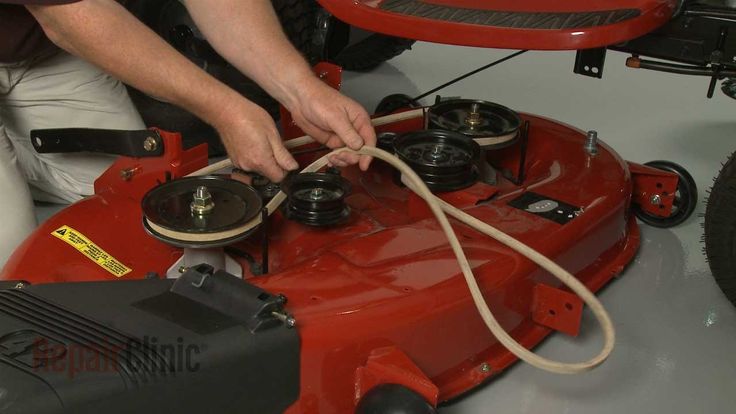
Remove the dust cover from the outside-center of the wheel. Gently pry the platic cover off with a flat-head screwdriver. Place the tip of the screwdriver along the edge of the cover. Once the cover begins to separate from the wheel, pull it free and set it aside.
Snap off the half-moon key retainer holding the wheel onto the axle. The key wraps halfway around the axle, and sets in a recess cut into the shaft. Insert the flat-head screwdriver into the top half of the key retainer and twist the screwdriver as if removing a screw. The key will separate from the shaft.
Grasp the rear tire and wheel with both hands at the nine and three o’clock position. Slightly wiggle the tire while pulling it away from the mower. The tire and wheel slide off the axle and key-stock.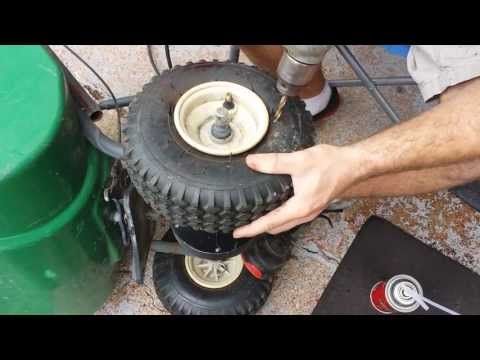
Tape the square key-stock onto the shaft. The key-stock is visible once the wheel is off. It mates with a groove cut into the inside diameter of the wheel, and prevents the wheel from spinning on the shaft. Taping the key-stock in place prevents losing it before the new wheel installation.
Spray the mower's rear axle shaft with penetrating oil if the wheel does not slide off easily.
Place a hand or rag over the half-moon key retainer while prying it off the axle.
How to remove the rear wheel of a bicycle, in theory, all cyclists and cyclists know. And here's what to do in conditions close to combat, when there are 35 minutes left before the train's departure, and the rear wheel has flattened 10 kilometers from the station ... I advise you, dear colleagues and readers, to always carry with you, except for a gentleman's set of hexagons, montazhek, "teflon", a pump and a spare chamber, a rag and a package of wet wipes.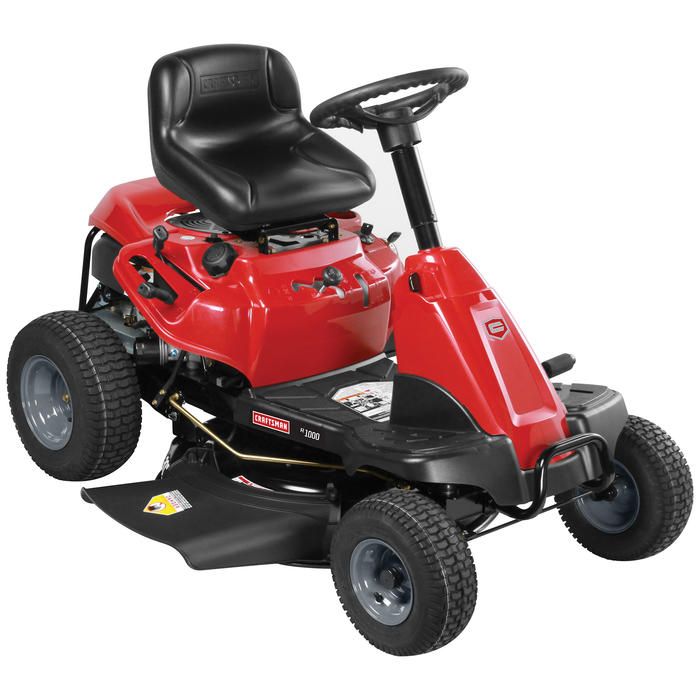 Believe me, holding the handlebars of a bicycle with clean hands is much more pleasant than dirty ones.
Believe me, holding the handlebars of a bicycle with clean hands is much more pleasant than dirty ones.
So, you feel an urgent need to remove the rear wheel of the bike. To start, throw the chain on the smallest rear wheel sprocket. Remove anything from the handlebars that might break when you put the bike upside down. Remove the backpack from the trunk, if it is, of course, there. Disengage the rear brake if you have rim brakes (V-brake). If you are big and strong, just put the bike upside down. If you are of a more delicate build, do this in two steps: first put the bike "on the left side", then take the frame and front fork and turn it "upside down". Open and loosen the eccentric or unscrew the fixing nuts, make sure that the wheel “goes” (perhaps the disengaged brakes will not be enough, you will have to release the pressure in the chamber). Using a cloth, grab the rear derailleur by the frame, pull back the chain to free the sprockets; With the other hand, pull the wheel out of the dropouts - the “lugs” of the rear stays.
After you have done all the necessary manipulations with the removed wheel, it must be returned to its native rear triangle. We insert the wheel between the feathers, while the sprockets should be inside the chain ring. Gently (again, through a rag) we tilt the switch frame to the steering wheel so that the chain loosens and the wheel “falls” into the dropouts; at the same time, we make sure that the chain wraps around the small sprocket of the gear block, and then goes into the switch frame (you can just press on the wheel, but it’s not always possible to find the right angle the first time). If you have disc brakes, check the disc's entry into the caliper slot (a device that, when you press the brake lever, clamps the disc with brake pads).
Make sure the wheel axle is fully seated in the dropouts on both sides. Make sure the chain is in the correct position. Spin the pedals; if you notice that the wheel is rubbing against the frame, correct the misalignment. Tighten the nuts, close the eccentric. Turn the bike over, apply the brakes, make sure that the pads are properly aligned with the rim and that the rim is firmly clamped. If necessary, pump up the wheel, set the position of the brake pads. You can collect the tool, hang a backpack, fix the removed bells and whistles on the steering wheel and hit the road.
Turn the bike over, apply the brakes, make sure that the pads are properly aligned with the rim and that the rim is firmly clamped. If necessary, pump up the wheel, set the position of the brake pads. You can collect the tool, hang a backpack, fix the removed bells and whistles on the steering wheel and hit the road.
If you are not interested in how to remove the front wheel of a bicycle, you can read no further. But believe me, removing the front wheel of a bicycle yourself is no less exciting than the rear. The principle is similar - remove, unfasten, turn over, open, loosen, blow off; reverse actions don't involve fiddling with the chain. The front wheel can be removed and put in the position of the bike "lying on its side". Be sure to check the entry of the axle into the dropouts and the operation of the brakes! The main thing is not to forget to wipe your hands afterwards! And then why do you carry with you this unimaginable burden - a package of wet wipes ...
Content:
- What is lawn mower mulching?
- Lawn Mower Unit with Mulching Function
- Different from conventional models
- Advantages and disadvantages of mulching
- What problems does mulch solve?
- What are the disadvantages of flail mowers?
Nuances of use and features of operation Species
- Mowers
- Electric lawnmowers
- Robots
Which mulching unit should I choose?
- Power
- Body material
- Wheels with bearings
Model rating
- Monferme 26197M
- Stiga Combi 48 ES
- Makita ELM 4613
- Hyundai L 4300S
- Champion LM 4670
- Other interesting models
Most buyers, choosing garden equipment, do not understand what mulching in lawn mowers is and why it is needed. Let's deal with the answer to this question and decide whether such a function is needed for country equipment or whether it makes no sense to overpay for it.
Let's deal with the answer to this question and decide whether such a function is needed for country equipment or whether it makes no sense to overpay for it.
The mulching function is an optional garden equipment option used to quickly process grass clippings and fertilize the lawn. In a slightly more general sense, mulching refers to a method of fertilizing fertile soil by covering agricultural crops with a layer of organic or mineral mulch. It allows you to keep moisture in the mail, and due to decay, improve the fertile properties of the soil and the growth of plants planted in it.
The mulch in the mower is made automatically: the cut grass falls into a special compartment and is destroyed to the smallest particles with knives. After that, the resulting mixture is simply poured onto the lawn in the direction of the mower. You do not need to clean up after mowing or fertilize the lawn - the technique will do everything for you.
To understand what mulching is in a lawn mower, let's take a look at the device itself. This will help to imagine the process of mowing the grass itself, and to understand how to care for the machine.
Mowers are arranged in approximately the same way and consist of 7 main elements:
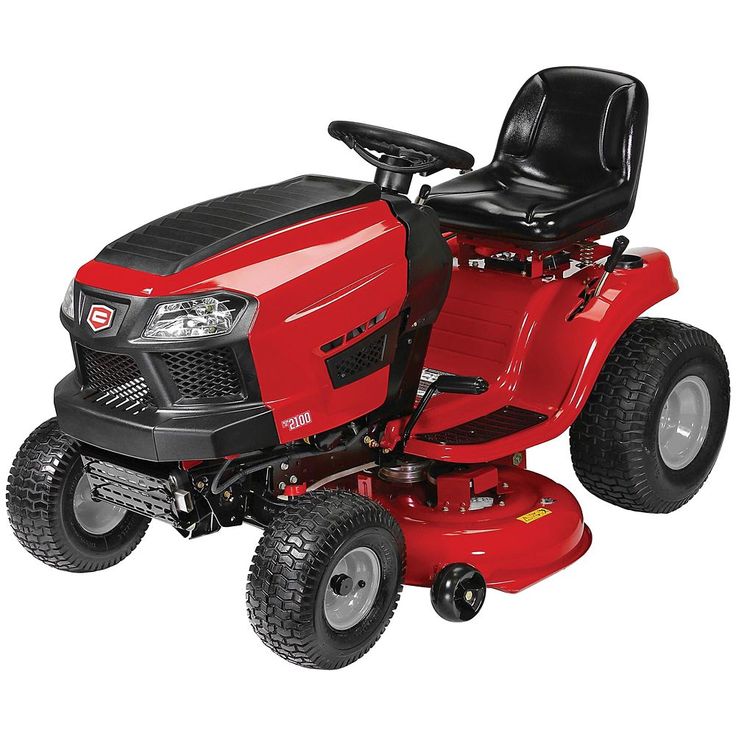
The grass mulching function is an additional option that not all mowers have. Experienced gardeners and landscape designers recommend that you definitely buy mowers with chopping, as this is grass care in several modes at once.
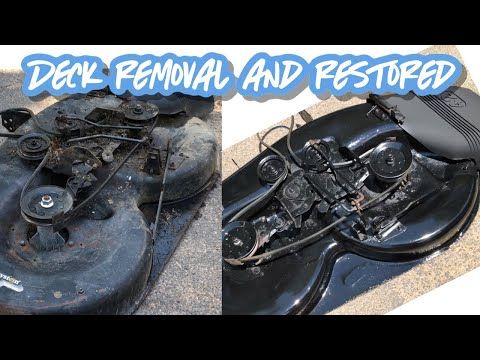
In addition, chopping grass in lawn mowers requires a slightly modified design of the equipment itself. Instead of a grass collector, it has a capacity for cutting mulch, and the mixture is ejected not from the side, as in classic models, but to the back.
The mulching feature in lawn mowers is not a lot of benefits in terms of lawn care. However, any plus is very easy to turn into a minus, so it is better to find out how the unit works and when to use it, even before purchasing it.
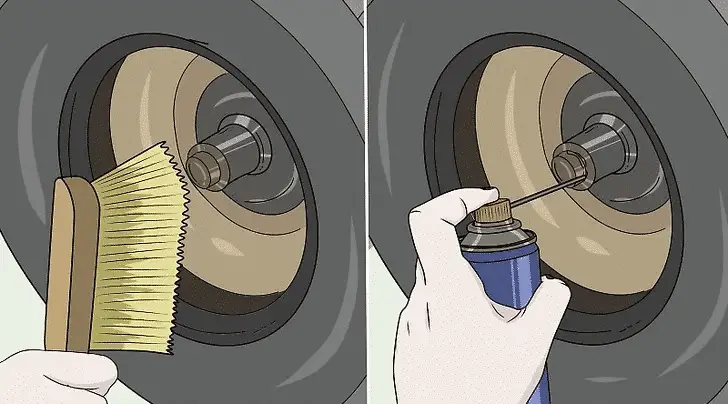 Mulch covers the lawn in a dense layer and does not allow young grass to burn out under the scorching rays on a hot day;
Mulch covers the lawn in a dense layer and does not allow young grass to burn out under the scorching rays on a hot day; During rains and high humidity, it is better not to mulch lawns at all - the chopped grass will begin to rot and ruin the lawn.
It is often impossible to carry out such work: the mulch that has not had time to dry will become an excellent place for the growth of fungi and mold.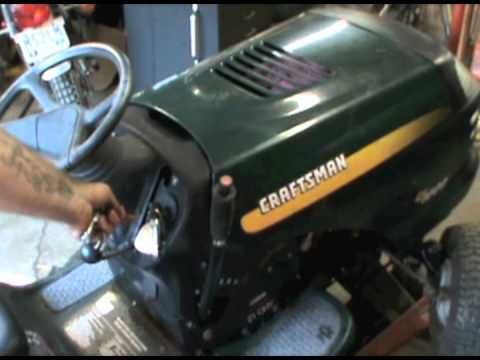
You still have to clean up the dried mulch. This will require either a rake or special garden equipment in addition.
To ensure that your garden equipment always works properly, and the lawn remains in perfect condition, do not forget the rules for operating the equipment you have purchased. Most often, the manufacturer notifies them in the instructions. But if you lost it or forgot to read it, here are 5 simple tips on how to use lawn mower mulching.
 The cut stems will quickly clog the mower and lead to problems with its cleaning and further use.
The cut stems will quickly clog the mower and lead to problems with its cleaning and further use. Do I need a "mulching" function in a lawn mower? Those who have used it at least once will definitely answer yes. In addition, cutting mulch is an additional option. This means that you can always use the mower in standard mode, if you do not need to cut the grass mass.
There is a downside to this problem: if you have a regular mower, you can buy a special set of knives and a grass mass container for cutting mulch. To do this, ask the seller what a mulching nozzle is and which one fits your model of garden equipment.
Why is mulching necessary and in which lawn mower is it better? To answer this question, let's talk about the types of grass mowers and their main functions.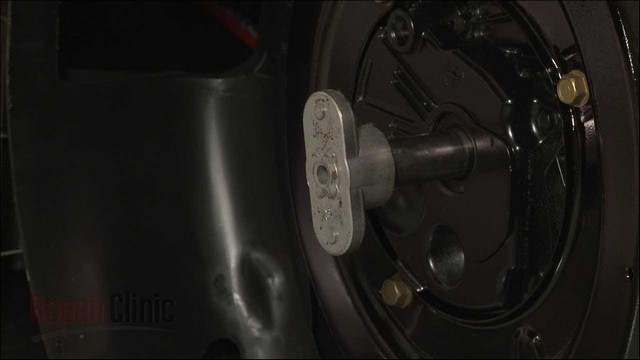
The most productive and popular lawn mowers are gasoline. This is an opportunity to carry out lawn mulching with a lawn mower on an area of several hectares. In this case, the equipment will not “get tired” or require recharging.
You do not depend on a power source, you will not think about cleaning the grass box and at the same time not only clean the lawn, but also fertilize it with organic chopping throughout the cultivated area.
These are mowers designed to work in a small area. Ideal for summer cottages, small lawns in the backyard of a private house or work in flower beds near office and commercial buildings. Most often, this is a technique with small dimensions, maneuverable and fairly light.
The units are notable for their low power, therefore their productivity is designed for a one-time mowing of an area up to several tens of square meters (5-10 acres maximum). Another feature of this type of garden equipment is the dependence on a power source, which must always be nearby so that the device is connected to the network.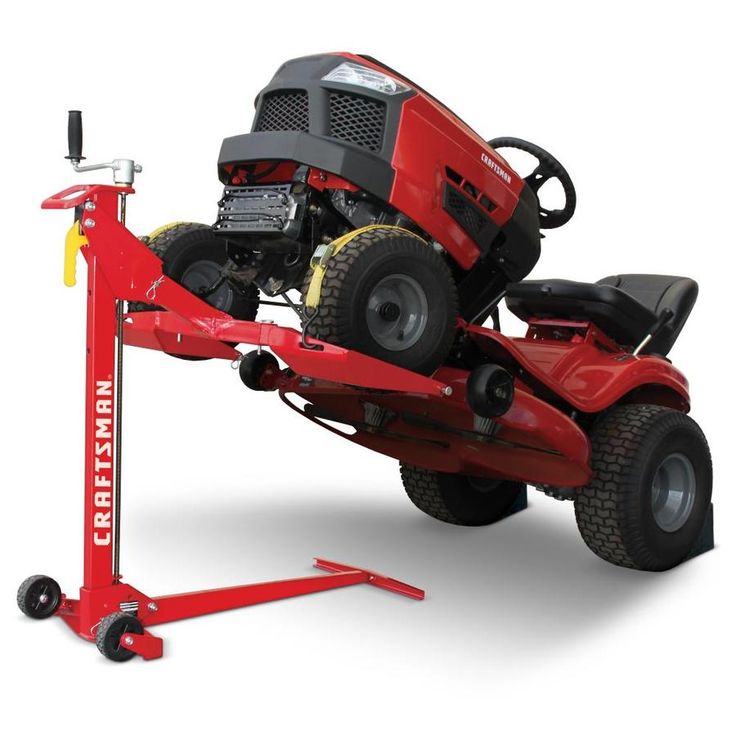
Mowers that mow the lawn without human intervention have long been a reality. However, the mini robots are not equipped with a grass catcher and always carry out mulching in the lawnmower automatically.
They work autonomously, without requiring management. Sensors read obstacles, and the robot carefully avoids them. At this time, sharp knives cut the grass, and the chopped chaff is immediately thrown onto the lawn.
It seems that such mowers have no drawbacks, but they are not. Mulching at the lawnmower robot sometimes goes with overlays: the device cannot track its route and periodically runs into the already mowed and mulched area. In addition, the robot can become entangled in bushes or get stuck in tall tree roots. It is good only for small lawns of even shape with fenced edges and short grass.
Let's take a look at what parameters you need to pay attention to when choosing a mower with a grass cutting function.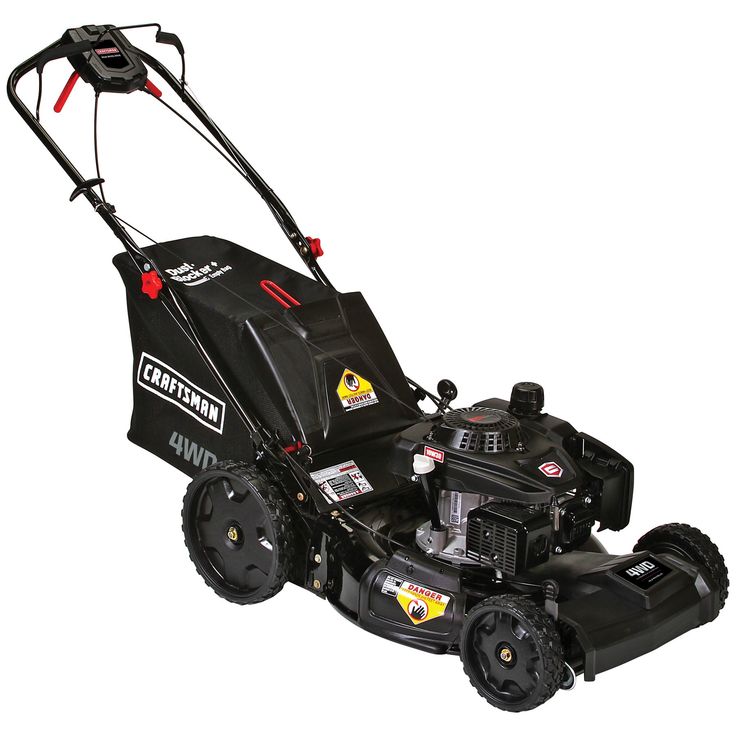 We have analyzed for you the three main characteristics of any model - power, deck material and type of wheelbase.
We have analyzed for you the three main characteristics of any model - power, deck material and type of wheelbase.
The modern market offers us models of mowers of various capacities, but this is not the most important indicator of garden equipment. Much more important is another parameter closely related to power - mowing width. The number of passages of equipment through the site, and hence its productivity, depends on its value.
For small suburban areas where mulching is needed, the lawn mower is selected with a mowing width of 30-40 cm. For large areas like park areas - with a width of 45-50 cm.
The body of the mower or deck is its important element, which is responsible for the service life of the unit, its cross-country ability, maneuverability and the quality of grass mowing. Why? Because durable and heavy metal gives an additional load on the ground, pushes the lawn itself and crushes the grass. Too light plastic, on the other hand, will crack quickly and may damage the mower blade itself or the grass catcher.
Choose gardening equipment made of durable yet lightweight materials that won't crack, corrode, or damage your lawn itself.
They are chosen as an alternative to a wheelbase with plastic bushings. More reliable and durable, bearings have a number of advantages:
Significantly extend the life of the mower without replacing damaged parts,
Keep cutting knives safe as they give a smoother and smoother ride,
Resistant to shock when driving on uneven lawn,
Easy to change if the bearing is damaged.
Remember, when connecting mulching to a lawn mower, that this is an additional option and its quality largely depends on which technique you have chosen. That is why we have prepared for you information about the most popular models of mowers, which are preferred by both summer residents and professional gardeners.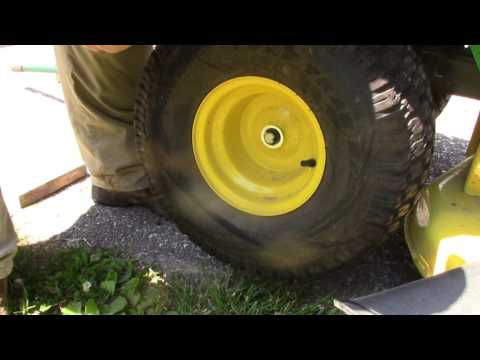
| engine's type | electric |
| The weight | 16.7 kg |
| deck material | plastic |
| Power | 1200 watts |
| Cutting width | 40 cm |
| Cutting height | 85 mm |
| Bevel height adjustment | 6 levels |
| Grass catcher volume | 50 l |
| Mulching | there is |
Convenient and reliable mower with height-adjustable manual. It has a reliable four-wheel base and easily copes with uneven areas on the lawn. Its durable plastic case will last a long time and will allow even women and children to use the equipment.
Ideal for domestic use and lawn care in the country house or in the yard of a private house.
| engine's type | electric |
| The weight | 32.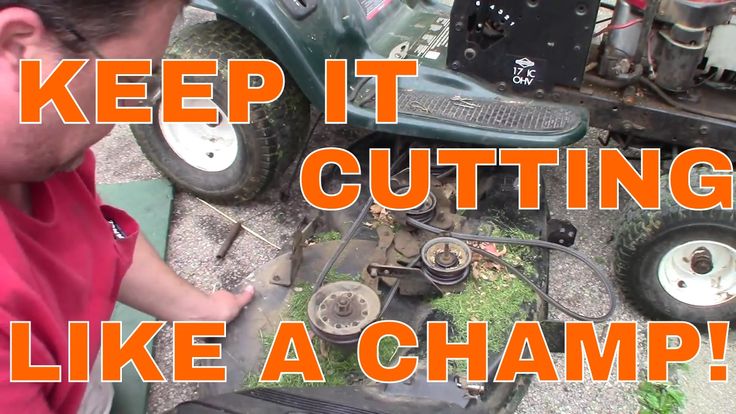 9 kg 9 kg |
| deck material | steel |
| Power | 1800 W |
| Cutting width | 46 cm |
| Cutting height | 80 mm |
| Bevel height adjustment | 5 levels |
| Grass catcher volume | 60 l |
| Mulching | there is |
Garden technology that can clearly show what the mulching mode means in modern electric rather than gasoline lawn mowers. Equipped with powerful rear wheels, but requires extra effort to move (push).
Provides a fairly wide mowing up to 46 cm in one line of travel, as well as the ability to work in standard mower mode with collecting grass in the grass box or in chopping mode.
| engine's type | electric |
| The weight | 27 kg |
| deck material | steel |
| Power | 1800 W |
| Cutting width | 46 cm |
| Cutting height | 75 mm |
| Bevel height adjustment | 8 levels |
| Grass catcher volume | 60 l |
| Mulching | there is |
A mower that you can safely buy for a summer residence.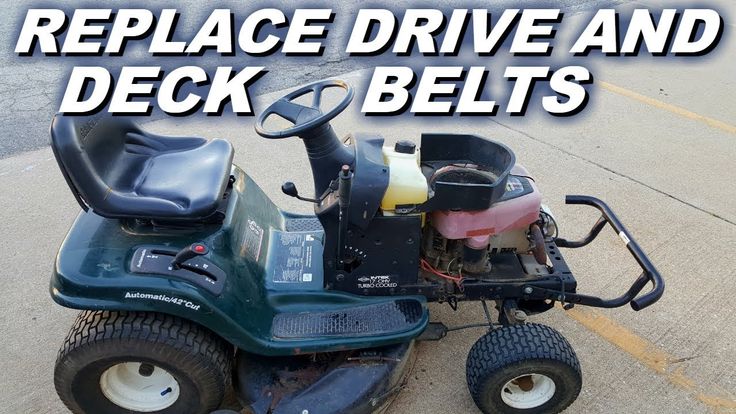 Powerful for its weight, it is perfect for mowing the lawn on a plot of up to 10 acres. It can work in grass collection or grinding mode, depending on the program you have installed. It adapts well to the desired cutting height, although it works at a maximum of up to 7.5 centimeters.
Powerful for its weight, it is perfect for mowing the lawn on a plot of up to 10 acres. It can work in grass collection or grinding mode, depending on the program you have installed. It adapts well to the desired cutting height, although it works at a maximum of up to 7.5 centimeters.
| engine's type | petrol |
| The weight | 30.6 kg |
| deck material | steel |
| Power | 2500 W |
| Cutting width | 41 cm |
| Cutting height | 75 mm |
| Bevel height adjustment | 7 levels |
| Grass catcher volume | 55 l |
| Mulching | there is |
Self-propelled mower with petrol engine and high power. Even with a small swath width, it gives excellent performance and has established itself as a reliable and durable technique.
Perfectly copes with mowing grass up to 7.5 cm high with the ability to adjust the level of the position of the knives, as well as switching the mower into chopping mode if necessary.
| engine's type | petrol |
| The weight | 32 kg |
| deck material | steel |
| Power | 2600 W |
| Cutting width | 46 cm |
| Cutting height | 75 mm |
| Bevel height adjustment | 7 levels |
| Grass catcher volume | 60 l |
| Mulching | there is |
Petrol mower with the ability to collect grass in a collector, side-mounted or rear-mounted mulch discharge. Thanks to its high power, it can easily cope with large volumes of work, and is also suitable for professional use.
There are practically no negative reviews on it, and therefore the Champion LM 4670 can be safely recommended for purchase by the summer season.
Surely you already know everything about lawn mower mulching - what it is, when it is necessary, how it works. Therefore, let's look at a few more popular models of garden equipment that also require attention:
